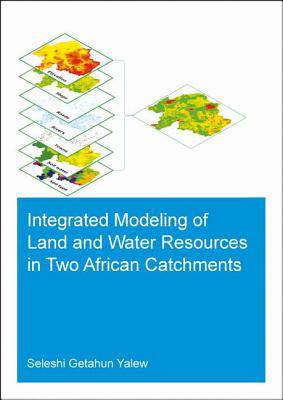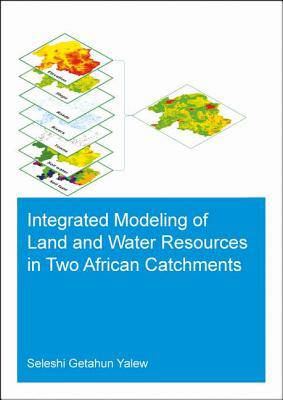
- Retrait gratuit dans votre magasin Club
- 7.000.000 titres dans notre catalogue
- Payer en toute sécurité
- Toujours un magasin près de chez vous
- Retrait gratuit dans votre magasin Club
- 7.000.000 titres dans notre catalogue
- Payer en toute sécurité
- Toujours un magasin près de chez vous
Integrated Modeling of Land and Water Resources in Two African Catchments
Seleshi YalewDescription
Demand for land and water for agriculture, urbanization, irrigation, hydropower, and industrialization is increasing to meet the demands of growing populations and of growing economies. However, changes in land and water resources are often studied separately. A better representation of the interaction between land-use change and its drivers on the one hand and water resources on the other is imperative for sustainable environmental management.
This research investigates and develops spatial analysis methods and tools for the quantification of dynamic feedbacks between land-use change and water resources, by focusing on case study catchments in Ethiopia and South Africa. Furthermore, the research investigates methods for analysing land-use suitability and modelling land-use change. Results show that major changes in land-use have been observed in the past two to three decades in the study catchments. Model representation of the interaction between land-use change and water resources shows that changes in land-use influence hydrologic responses. These influences are especially pronounced during high- and low-flow seasons. Likewise, hydrologic processes and water resources availability influence land-use suitability and hence land-use change responses. Accounting for the dynamic feedback between land-use and hydrology thus produces improved knowledge that can better inform integrated natural resources management.
Spécifications
Parties prenantes
- Auteur(s) :
- Editeur:
Contenu
- Nombre de pages :
- 208
- Langue:
- Anglais
- Collection :
Caractéristiques
- EAN:
- 9781138593381
- Date de parution :
- 01-05-18
- Format:
- Livre broché
- Format numérique:
- Trade paperback (VS)
- Dimensions :
- 168 mm x 241 mm
- Poids :
- 362 g







